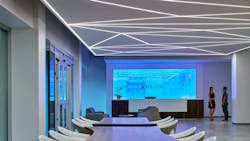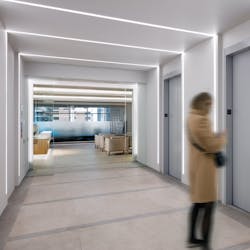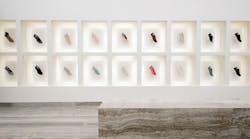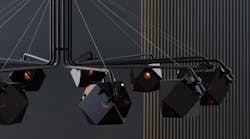Dupes, knock-offs, counterfeits—different names for the same concept: a cheaply made and cheaply sold copy of a superior product. Nearly every industry, from clothing to aviation, has to deal with it, but lighting designers are finding that the problem is growing.
“Dupes have always been out there,” says Gregory Kay, president and founder of PureEdge Lighting, “but fairly recently—I would say in the last four to five years—is when it really shocked me. I could make a product and put it out there, and usually it would take a year or two for dupes to take off, but now it’s like six months.”
The sense that the counterfeit issue is growing is shared in the industry. Shant Madjarian, founder and president of Juniper, tells Architectural SSL, “For us, it started when the business began to grow. When you’re small, you aren’t a target.”
Madjarian believes one of the ways to fight dupes is to be constantly evolving. “Dupes hurt innovation,” he says. “It’s a race to the bottom.”
And he isn’t too concerned when people copy the general aesthetics of his designs, saying, “As long as our company is moving forward creatively, by the time dupes come around for a specific product, Juniper will have already moved on to making a better one.”
What does concern Madjarian, though, is the quality difference between his designs and the dupes; he doesn’t want end-users to be disappointed with their lighting and then blame it on what they think are Juniper products. “It isn’t just the loss of business,” he says. “If a Juniper product is specified, and a dupe is used instead, the end-user blames the inferior product on Juniper, and that damages our brand.”
According to Madjarian, the responsibility falls partially on building designers. “The designer will specify products they may know are beyond the customer’s budget but fully meet the design requirements and vision,” he says, “and this drives the client to seek a knock-off at a cheaper price.”
This sentiment is echoed by Ryden and Lanette Rizzo, founders of Allied Maker, who tell Architectural SSL, “Some consumers are duped themselves. They hired a team, and the team is looking to complete a job at a good value. Every now and then, some of these companies posturing themselves with our stolen product photos fool some of these buyers. They look at the photos, and they think it's the same product, and they are tempted by the low price.”
Like Juniper, Allied Maker sees customers who are unhappy when they don’t get what they thought they were getting.
“It's really sad to have to tell these people when they call us when something goes wrong that it isn't our product,” said the Rizzos. “I think that if people really understood the level of care in our process, there is no way they would not care. Many of these companies that are copying our designs are international companies without the standards of care for their labor force. It's honestly inhumane. This is how products get produced so inexpensively.”
But what is the solution? Can the industry fix this issue from the inside? “The problem,” Madjarian says, “with self-policing is that it acts as a gatekeeping mechanism that is hard to enforce. Original product producers need to tell better stories to help clients connect the dots between original designs and the value they can create for projects.”
Some firms find that legislation, though it exists, seems to be ineffective. According to the Rizzos, “There is actually a lot of active legislation in place, but that doesn't stop people from breaking the laws and having the original designer run around playing whack-a-mole. There is very much a ‘catch me if you can’ attitude from the dupe manufacturers, and then when they are caught, they quickly take down the offending product to avoid litigation.”
Kay finds that the key to fighting dupes is patents, saying, “I don’t think there’s much the government can do; individuals have to get patents—I mean, that’s really it, the government will back you up on it. If you get a patent that’s solid, you’re good. If you’re innovating, you’d better get a patent.”
According to Kay, one of his biggest frustrations was not patenting the technology used in TruLine—recessed lighting that’s only as thick as drywall. At the recommendation of an engineer, Kay didn’t pursue a patent and quickly found several companies copying the technology. He says he sees copies of his designs all over the world, but patents only protect him in the States. “It’s also a matter of pride in what you do,” Kay says, “and so it’s very frustrating when you see these knock-offs.”
So, where is the line between being influenced by a design and copying a design? Madjarian says, “If you’re trying to undercut the original designer, it’s a dupe; true inspiration hopes to expand, improve, and grow a concept in a way that proliferates good ideas rather than cheapening them.”
The Rizzos say, “Everything in design is inspired by something—by nature, architecture, fashion, or other designs, etc. It is when that work tries to emulate the original product that it becomes a problem. It is not inspirational when you don't take the effort to make the design your own original execution and add on it and contribute something unique. When you are inspired, you are giving your perspective in the most honest way you can, in the way only you can. It is very clear to anyone when something is ripped off when the emulation is so exact that it is meant to pass for the original, even if badly.”
This article has been updated since first publication.







